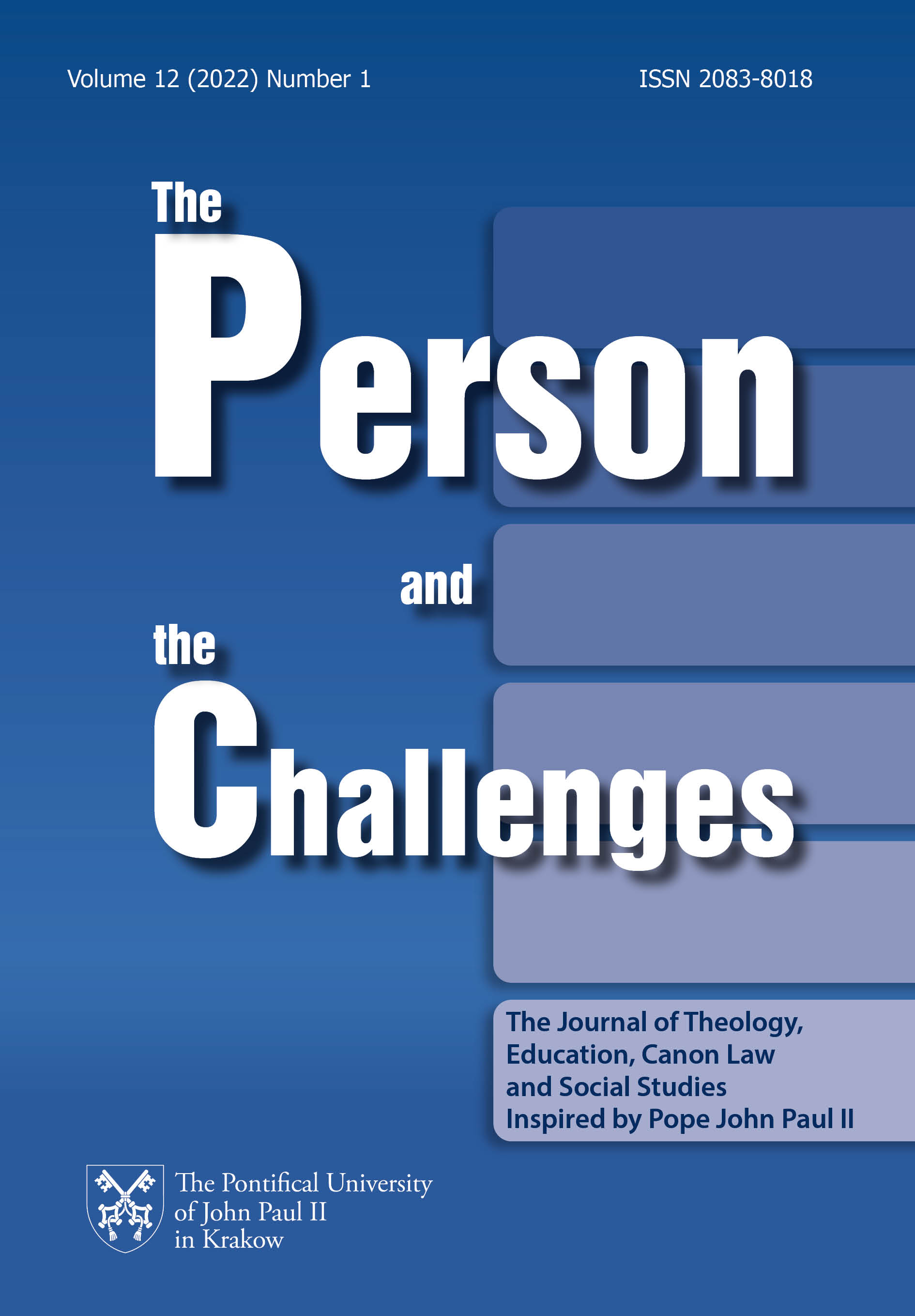Crisis Communication in the Context of Child and Youth Protection – Diagnosis, Problems, Challenges. The Case of the Catholic Church in Poland
DOI:
https://doi.org/10.15633/pch.4240Słowa kluczowe:
crisis communication, PR, child and youth protection, paedophilia, Catholic Church, PolandAbstrakt
Crisis management principles that have been in place and proven for decades by commercial companies and corporations, tested at great expense, apply equally to all non-commercial entities, governmental, religious, political, as well as to individuals. There is no deviation from them, as crises in today’s world are determined by the media, not the entity or institution itself. Every crisis can become an opportunity for change, strengthening, improvement, purification and even victory. The condition is a professional approach to the problem. A crisis can also be the beginning of the end, a failure. The biggest enemy of success in this situation is lack of knowledge how to act properly, mistakes in communication and management of resources. However, avoiding responsibility, hiding facts, manipulating information, being too quick and inconsiderate, resorting to falsehood, hypocrisy, and calculated behaviour will not facilitate success either. The article will analyse the institutional actions of the Catholic Church in Poland for the protection of children and adolescents in the context of the classical principles of crisis management applied in a crisis.
Bibliografia
Accattoli L., Tutti i mea culpa di Giovanni Paolo II, Milano 1997. In Polish: Kiedy papież prosi o przebaczenie. Wszystkie mea culpa Jana Pawła II, Kraków 1999.
Cahil D., Wilkinson P., Child Sexual Abuse in the Catholic Church: An Interpretive Review of the Literature and Public Inquiry Reports, Melbourne 2017.
Cohn R., The PR Crisis Bible: How to Take Charge of the Media When All Hell Break Loose, New York 2000.
Collins M., Hollins S., Leczenie ran w sercu Kościoła i społeczeństwa, in: Ku uzdrowieniu i odnowie. Materiały z sympozjum dla biskupów i przełożonych zakonnych o seksualnym wykorzystaniu osób niepełnoletnich, Papieski Uniwersytet Gregoriański, 6–9 lutego 2012, Kraków 2012, pp. 47–62.
Friedman M., Everyday crisis management: How to think like an emergency physician, Naperville 2002.
Gesenhues A., Study: 72% Of Consumers Expect Brands To Respond Within An Hour To Complaints Posted On Twitter, https://martech.org/study-72-of-consumers-expect-brands-to-respond-within-an-hour-to-complaints-posted-on-twitter/ (02.02.2022).
Guzik P., An Unfinished Story of Conversion: Clerical Sexual Abuse in Poland. A Communications Case Study on Betrayal, Healing and Trust Recovery, “Church, Communication and Culture” 5 (2020) 3, pp. 417–455.
ISKK, Wykorzystywanie seksualne osób małoletnich przez niektórych inkardynowanych do diecezji polskich duchownych oraz niektórych profesów wieczystych męskich zgromadzeń zakonnych i stowarzyszeń życia apostolskiego w Polsce. Wyniki kwerendy, https://cod.ignatianum.edu.pl/images/Dokumenty_w_PDF/ISKK_Wyniki_Kwerendy_opracowanie_final.pdf (15.01.2022).
Khattab U., Fonn S.B., Ali S., Strategic communication management of corporate crises: Case analysis, “e-Journal of Social & Behavioural Research in Business” 8 (2017) 1, pp. 15–40.
Kloch J., Przybysz M., Medialny przekaz problematyki pedofilii w Kościele katolickim w Polsce, “Sympozjum” 2 (2014) 27, pp. 93–112.
Kloch J., Zasady występowania duchownych w mediach według Konferencji Episkopatu Polski, in: A. Gralczyk, K. Marcyński, M. Przybysz (eds.), Media w transformacji, Warszawa 2013, pp. 123–131.
Łaszyn A. et al., e-Kryzys. Jak zarządzać sytuacją kryzysową w internecie, Warszawa 2020.
Łaszyn A., Komunikacja kryzysowa, in: B. Biniszewski (ed.), Sztuka public relations. Z doświadczeń polskich praktyków, Warszawa 2006.
Normy ochrony dzieci i młodzieży oraz zasady praktyk duszpasterskich w Diecezji Warszawsko-Praskiej, https://diecezja.waw.pl/plik.php?name=31502.pdf (02.02.2022).
Obe A. J., Evans M., Frank I., Sharpling D., The Roman Catholic Church. Safeguarding in the Roman Catholic Church in England and Wales. Investigation Report November 2020, London 2020. Full text: https://www.iicsa.org.uk/document/roman-catholic-church-investigation-report-november-2020 (02.02.2022).
Paul VI, Evangelii Nuntiandi. Apostolic Exhortation to the Episcopate, to the Clergy and to all the Faithful of the Entire World (8.12.1975), https://www.vatican.va/content/paul-vi/en/apost_exhortations/documents/hf_p-vi_exh_19751208_evangelii-nuntiandi.html (02.02.2022).
Polish Bishops’ Conference, Bądźmy wrażliwi na bezpieczeństwo dzieci i młodzieży. Stanowisko Konferencji Episkopatu Polski w sprawie ochrony dzieci i młodzieży, https://episkopat.pl/badzmy-wrazliwi-na-bezpieczenstwo-dzieci-i-mlodziezy-stanowisko-konferencji-episkopatu-polski-w-sprawie-ochrony-dzieci-i-mlodziezy/ (02.02.2022).
Polish Bishops’ Conference, Kościół wobec grzechu i przestępstwa pedofilii (official documents), https://episkopat.pl/kosciol-wobec-przestepstwa-pedofilii/ (03.02.2022).
Przybysz M., Kościół w kryzysie? Crisis management w Kościele w Polsce, Tarnów 2008.
Tworzydło D., Gawroński S., Zajic M., Catholic Church in Poland in the Face of Paedofilia. Analysis of Image Actions, “European Journal of Science ang Theology” 5 (2020) vol. 1, pp. 157–172.
Weigel G., The Courage to be Catholic: Crisis, Reform and the Future of the Church, New York 2002. In Polish: Odwaga bycia katolikiem. Kryzys, reforma i przyszłość Kościoła, Kraków 2004).
Weigel G., Witness to Hope. The Biography of Pope John Paul II, New York 1999 (1st edition). In Polish: Świadek nadziei. Biografia Papieża Jana Pawła II, Kraków 2002).
Pobrania
Opublikowane
Numer
Dział
Licencja
Autorzy publikujący w czasopiśmie udzielają jego wydawcy zgody o następującej treści:
- Autor zachowuje autorskie prawa majątkowe do utworu, a jednocześnie udziela wydawcy czasopisma zgody na jego pierwszą publikację w wersji drukowanej i wersji online na licencji Creative Commons Uznanie autorstwa 4.0 Międzynarodowe oraz zgody na wykonywanie opracowań, w tym przekładów.
- Autor ma możliwość udzielania zgody niewyłącznej na opublikowanie utworu w wersji, która ukazała się w czasopiśmie (np. zamieszczenia go w repozytorium instytucjonalnym lub opublikowania w książce), wraz z informacją o jego pierwszej publikacji w czasopiśmie.
- Autor może umieścić swój utwór online (np. w repozytorium instytucjonalnym lub na swojej stronie internetowej) jeszcze przed zgłoszeniem utworu do czasopisma.

